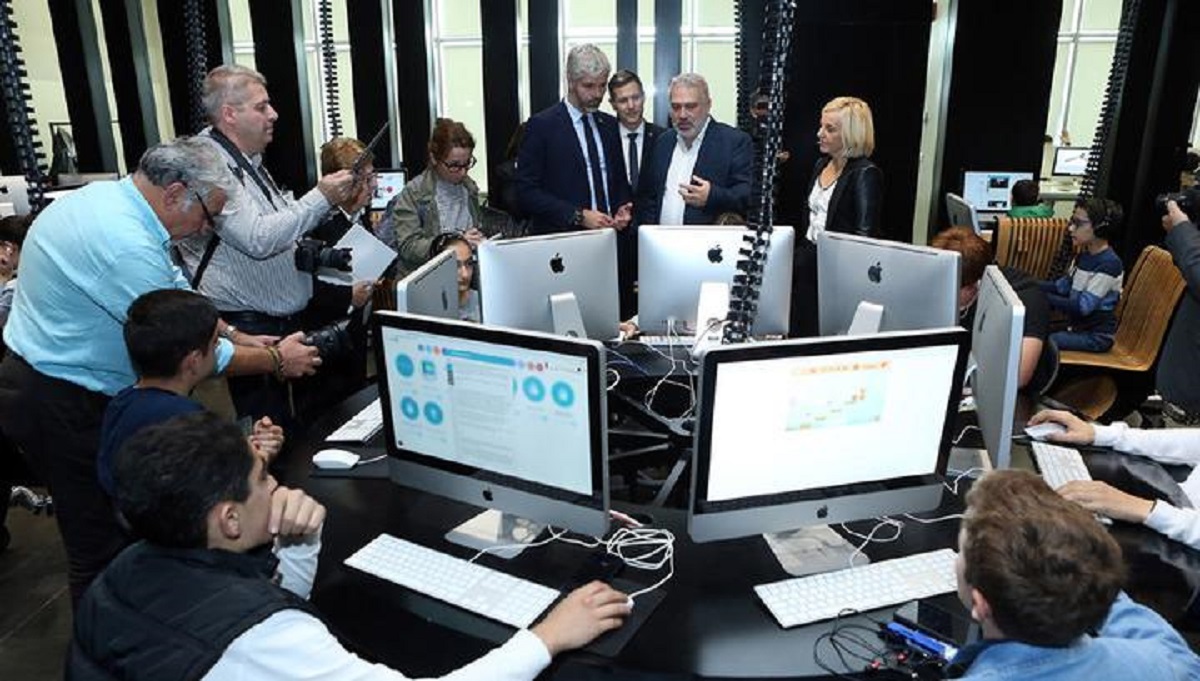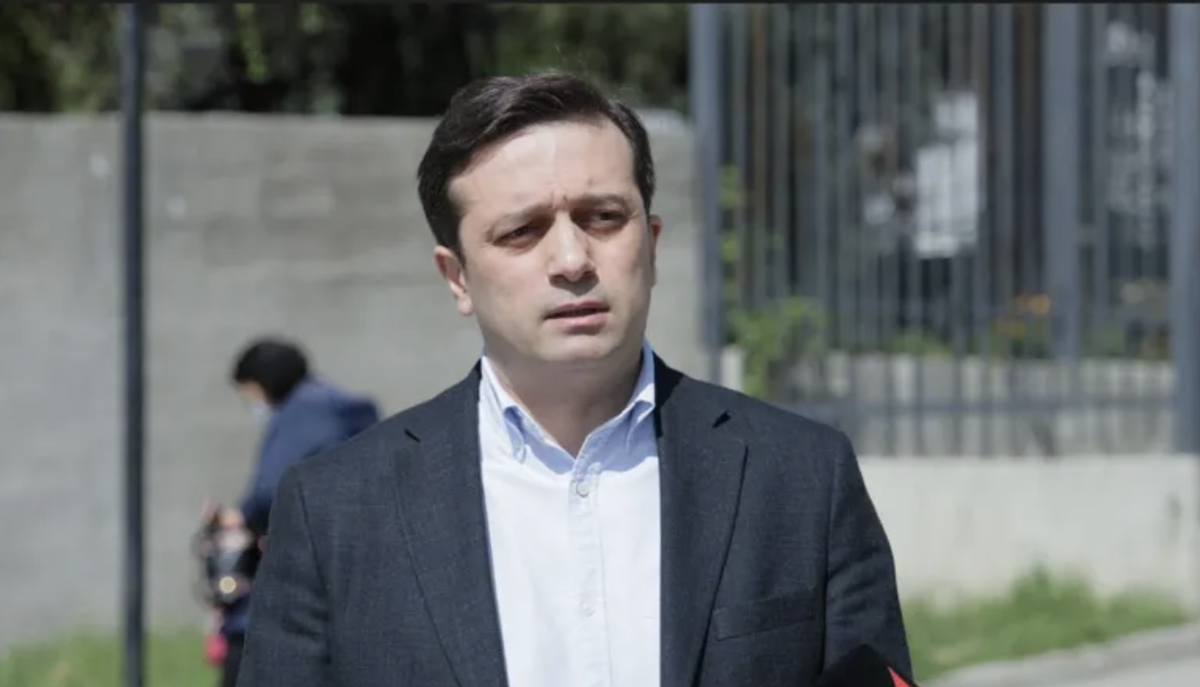Armenia-Russia Trade: Benefits and Risks of Sanctions
Probability of Armenia falling under US sanctions
Armenia’s trade turnover with Russia has increased in recent years, with export volumes almost doubling. This is due to new export and re-export opportunities from Armenia as a result of the Russian-Ukrainian war. Due to the significant growth of re-export indicators, the probability and risks of Armenia and Armenian organizations falling under US sanctions are discussed.
- How the influx of Russian citizens has affected the Armenian real estate market
- “2023 was quite successful for Armenia” – Finance Minister’s assessment
- 2023 in Armenia: dramatic, disappointing and hopeful developments
Sharp growth in export performance
Russia accounts for a third of the external and mutual trade turnover in 2022 — 35.6 percent of the total trade turnover. In 2021, this was 31.3 percent.
According to the data of the first half of 2023, trade turnover with the Russian Federation already accounts for 34.6 percent of foreign and mutual trade.
It is noteworthy that in the trade turnover there is a significant increase in the indicators of exports. In 2022 it amounted to 45 percent of the total volume, while in 2021 it was at 28 percent, and in 2020 26 percent.
According to the first half of 2023, Russia accounted for more than 51 percent of total exports.
Imports from Russia have also increased, but the figures are more modest.
For the first time in the last 10 years, exports from Armenia to Russia exceeded imports. In January-June 2023, goods worth 1,694,668.6 thousand dollars were exported, while imports amounted to 1,406,062.7 thousand dollars.
“At the moment we export more goods to Russia than we import. Armenia never had such dynamics in previous years,” economist Aghasi Tavadyan says.
Gagik Makaryan, head of the Republican Union of Employers of Armenia, notes that the war in Ukraine has had a significant impact on the activation and increase in trade volumes between Armenia and Russia.
“The war created prerequisites for expanding the spectrum of trade with Russia. At the same time, we lost the opportunity to trade with Ukraine. That is, sometimes we gained, sometimes we lost. But on the whole, there are more benefits than losses.”
According to the Armenian Statistical Committee, the share of trade with Ukraine in foreign and mutual trade turnover has been declining in recent years. It amounted to 2.1 percent in 2020, two percent in 2021, 0.7 percent in 2022 and 0.5 percent in the first nine months of 2023.
What is exported from Armenia to Russia? The picture has changed
We studied the list of goods with the highest customs value exported from Armenia to Russia over the last three years. The study showed that the export picture has changed significantly. In 2022-2023, exports of radio equipment, telephones, cars, monitors, projectors, receiving equipment, TV sets and computers increased dramatically:
| Goods | 2021 | 2022 | 2023, first half of the year |
| Telephone and telegraph devices, mobile/other communication devices | 1.700 | 648.600 | 568.300 |
| Passenger cars (pieces) | 215 | 11.430 | 13.498 |
| Diamonds (thousand carats) | 173.9 | 464.4 | 256.1 |
| Monitors, projectors, receiving equipment | 30 | 223.466 | 238.800 |
| Computers | 18.100 | 251.800 | 165.900 |
| Trucks | 10 | 9.256 | 251 |
Export or re-export?
The analysis of exported products shows that some of the exported goods are not produced in Armenia. Consequently, the country is a transit route for re-exporting these goods to Russia.
Deputy Finance Minister Vahan Sirunyan admits that re-exports account for a significant part of exports to Russia:
“In the first nine months of 2023, compared to the same period last year, a dollar increase in exports of goods was recorded – by 85 percent. This growth was significantly contributed by re-exports to Russia – by 80.6 percent, and exports of goods of Armenian origin by 4.4 percent,.”
According to the customs service, the lion’s share of re-exports from Armenia falls on the Russian Federation, a small part on Belarus, Georgia and Moldova.
As for goods with high customs value, particularly telephone and telegraph sets (code 8517), 38.4 percent of Armenia’s imports in 2022 were then exported to Russia. A small portion was exported to Georgia, Belarus, and Moldova. Exports to other countries are insignificant.
24.8 percent of passenger cars imported into Armenia were exported to Russia. This represents 94.2 percent of all car exports.
Approximately half of the monitors, projectors, receiving equipment (code 8528) imported to Armenia were exported to Russia.
Also 33 percent of imported computers and their units (code 8471) were exported to Russia. This constitutes 89.5 percent of the total export volume.
Increase in the number of companies exporting products with high customs value
Along with the increase in exports of technical equipment, the number of exporting companies willing to do so has increased dramatically:
- in 2021, there were 15 exporters of telephone and telegraphic equipment, mobile or other communication apparatus, devices for receiving or transmitting data, sound, or images, and 83 in 2023;
- the number of exporters of computers and their units increased from 17 to 56;
- the number of exporters of monitors, projectors, receiving equipment increased from two to 30;
- the number of exporters of automobiles increased from 15 in 2021 to 331 in 2022, 706 in 2023;
- the number of exporters of trucks increased from four in 2021 to 95.
Equipment exporters – in the list of the largest taxpayers
In 2022, for the first time, equipment import-export organizations ranked first in the list of 1000 large taxpayers published by the State Revenue Committee.
Thus, Mobile center art company became the seventh major taxpayer, paying AMD 17,569,460 [about $43,923] to the treasury. In 2021, the company ranked a modest 40th on the list.
“There have never been exporters of technical equipment and phones among the first 20-25 big taxpayers,” says economist Aghasi Tavadyan.
He attributes the change in the situation to Russia’s restrictions on imports of these goods as a result of the war in Ukraine and the new export opportunities that have opened up for Armenia.
On Armenian organizations under U.S. sanctions
The U.S. Department of Commerce has imposed export restrictions on a number of organizations from various countries that have traded with Russia. In April 2023, the sanctions list included 10 organizations registered in Russia itself, 12 from China, two from Uzbekistan, two from the UAE, and one company each from Malta, Singapore, Spain, Syria, Turkey, and Armenia.
Later, the list published in May included one organization each from Armenia and Kazakhstan, as well as about seven dozen organizations registered in the Russian Federation.
One of the Armenian organizations on which export restrictions were imposed is TACO LLC. According to the electronic register of the Armenian government, it was registered on April 5, 2022. Its founder and owner of 100 percent of shares is Russian citizen Vadim Verkhovtsev.
A statement published on the website of the U.S. Treasury Department emphasizes that the company was sanctioned for materially supporting, sponsoring or providing financial, material, technological or other support to the Russian company Radioavtomatika.
In response to our inquiry to the State Revenue Committee of Armenia about which organizations have exported sanctioned goods (including cell phones, spare parts, TV sets, monitors, projectors, computers, headphones and other parts) to Russia, the agency replied that it could not provide the requested information on specific organizations.
We then sent a second request to the State Revenue Committee asking for a list of companies that imported and exported goods with the highest customs value in 2021-2023.
In the list provided, TACO is mentioned as the company that exported computers and their units from Armenia in 2022. This company is no longer on the list of exporters in 2023.
Another Armenian organization that fell under the American sanctions – according to the list published on May 19, 2023 – is “Medisar” company.
According to the information of the register of legal entities, the owner of 100 percent of the company’s shares is Armenian citizen Manvel Gabrielyan.
It was founded in 2001. The company is a specialized supplier of chemical reagents, industrial chemical raw materials, laboratory and analytical equipment, utensils and furniture. It officially represents well-known manufacturers of laboratory equipment from Switzerland, Germany and other countries in the Armenian market. According to the list provided by the State Revenue Committee, Medisar exported medical equipment.
On Armenia’s risks of being under sanctions and prevention measures
Over the past year and a half, international partners from different countries have voiced suspicions about Armenia’s possible assistance to Russia. The country’s authorities have always officially denied this.
In March 2023, Prime Minister Nikol Pashinyan commented on the issue during a joint press conference with German Chancellor Olaf Scholz in Germany as follows:
“Talks about circumventing sanctions are nothing more than talk. But, of course, we should follow the developments with all attention, help and private sector to conduct its activities in such a way so as not to spoil our relations with any of our partners.”
Taking into account the possible risks, the Armenian government in May 2023 adopted Decree 808-N, approving a list of 38 national security-sensitive goods that may, as a result of a certain transformation, be considered sub-sanctioned.
“We have established export controls on 38 goods. This will make it possible, as a result of additional inspections, to make sure that our companies will not fall under secondary sanctions,” Economy Minister Vahan Kerobyan told reporters in August.
Economist Aghasi Tavadyan regards Armenia’s risks of falling under U.S. sanctions as “quite low.”
“I consider the overall probability small. But I don’t rule out that certain organizations may fall under sanctions in case they try to export goods of military-industrial importance or promote these activities.”
Economist Gagik Makaryan, head of the Employers’ Union, says that both the department he heads, the government and the EU representation in Armenia are taking steps to prevent local organizations from falling under U.S. sanctions.
He considers the adoption of Decision 808-H, organization of joint “informative meetings” and training programs with the EU, to be the most important steps taken by the government. The economist believes that these measures will help exporters get full information about all the nuances and possible risks related to the sanctions.
Conclusion
Despite the sharp increase in exports and re-exports to Russia, economists assess the probability of Armenia falling under U.S. sanctions as low. The growth rates of exports and re-exports are seen as a consequence of “a unique opportunity for the country to expand trade with Russia”.
The investigation was conducted by the Women Investigative Journalists Network (WIJN) with support from International Media Support (IMS). Legal support for the material was provided with the support of the UNESCO project.
Follow us – Twitter | Facebook | Instagram
Probability of Armenia falling under US sanctions




















